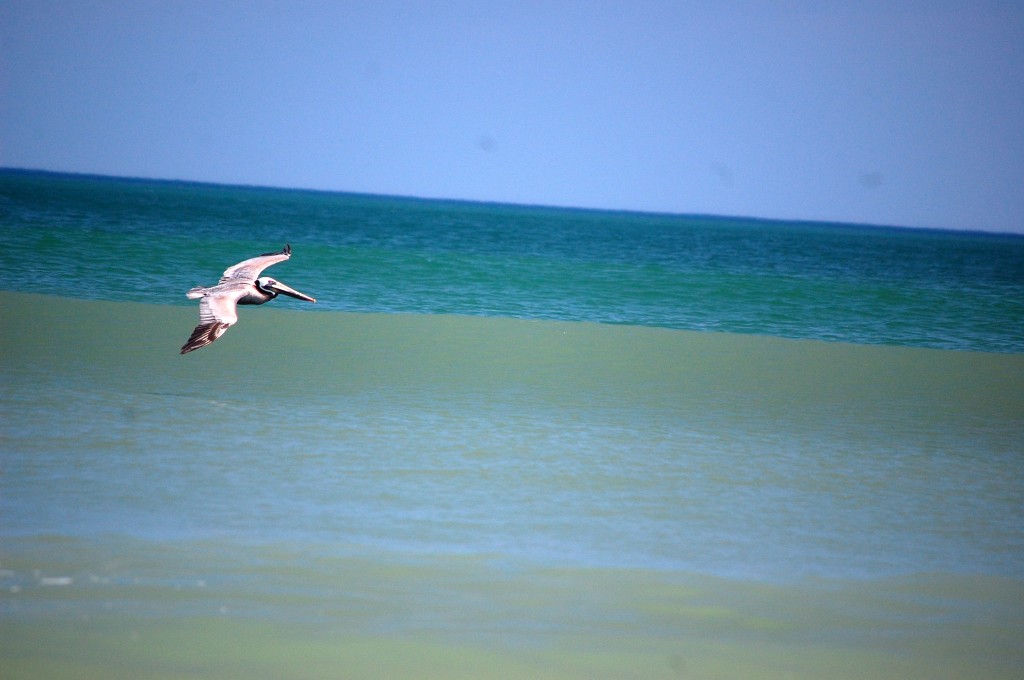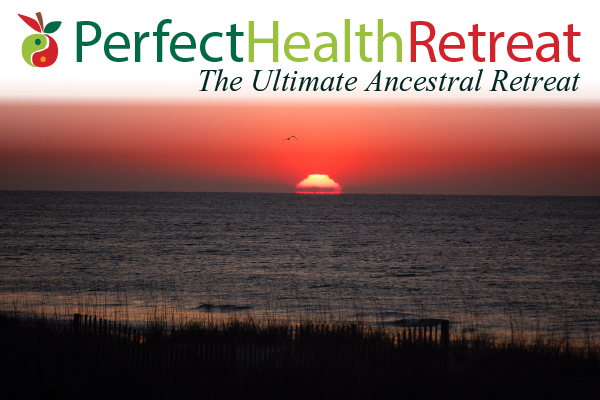For almost a year and a half, Shou-Ching and I have been trying to boil down everything we know about ancestral health – diet, nutrition, lifestyle, exercise, cooking, health management – and make it available in accessible forms.
One way we’re sharing our advice, the Perfect Health Seminar in Pittsburgh next Sunday, still has some open spots. Please join us!
But the Perfect Health Retreat has been the truly outstanding laboratory for putting all of our ideas together. We control the environment, the schedule, the food, the exercise, and do health coaching before and after the Retreats. It’s a good opportunity to try to optimize everything, teach everything, and see the impact on guests’ health over the months and years that follow.
I’ll be blogging soon about early health results from May and our plans for the upcoming October retreats. But before getting into that, I thought it would be fun to share photos from the May Retreat.
Setting
To my mind, the North Carolina beaches are among the best in the United States. Hawaii has year-round warm water and brightly colored tropical fish to amuse snorkelers, and southwest Florida and the Keys are great also. But at its best seasons – May and October – I’d rather be in North Carolina. Air and water are comfortably warm, not hot; there are no crowds, and the environment is restful and tranquil.
Sunrise over the Atlantic is lovely: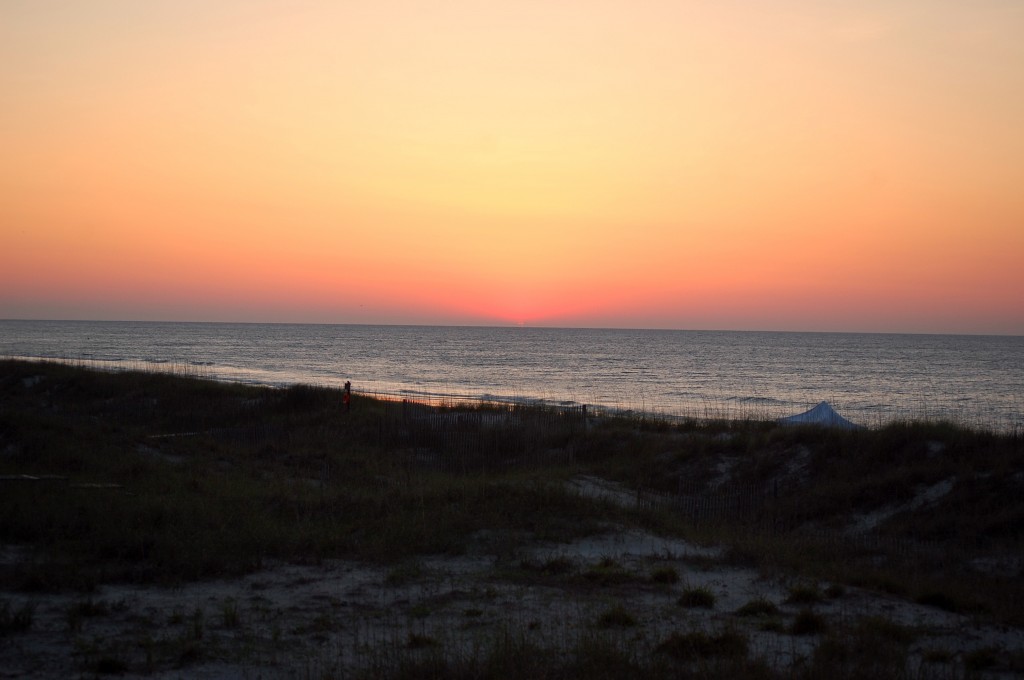
Looking out the back door:
Up the shore: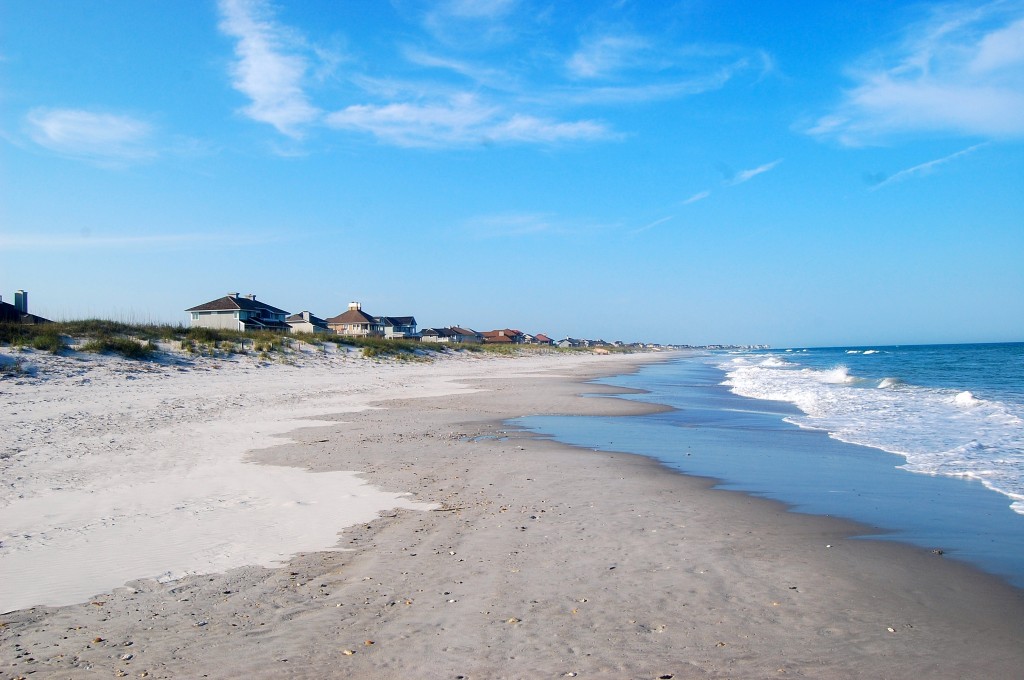
Looking west at sunset:
The beach at night: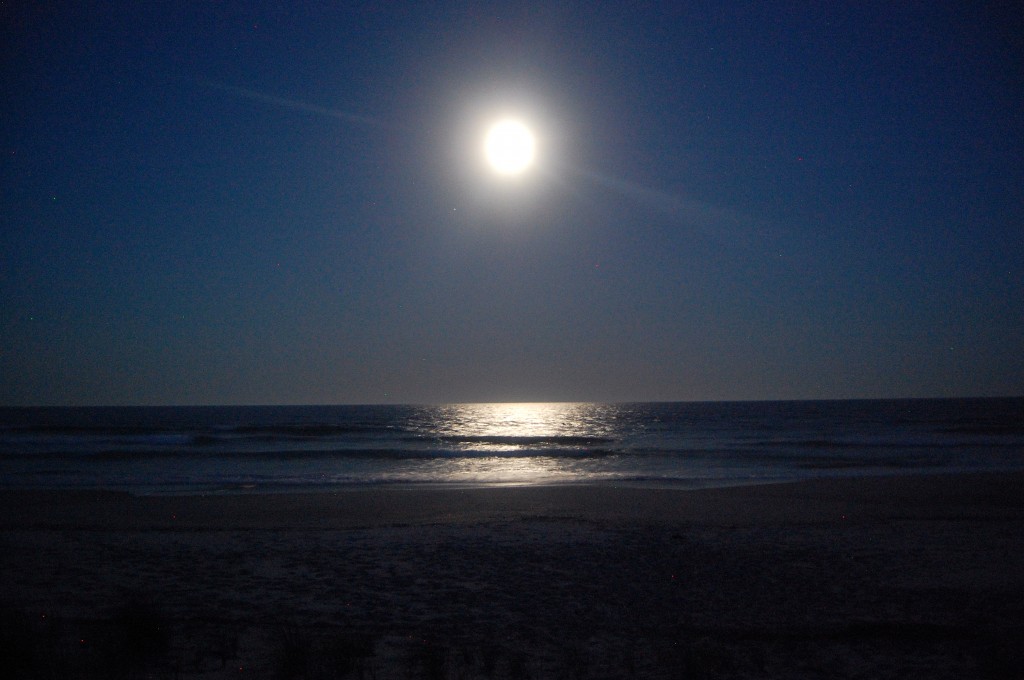
The sound of the waves, coming in through our bedroom window at night, was restful and soothing.
Wildlife
A few guests hunted successfully for sand dollars, starfish, and clams. Here are a few other creatures that visited the Retreat.
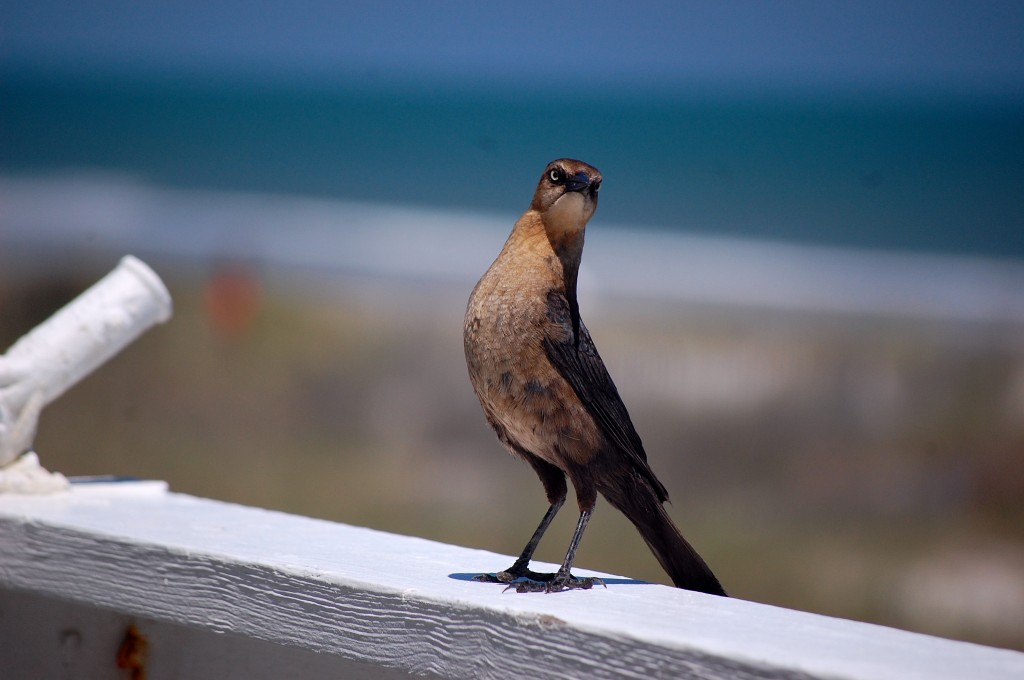
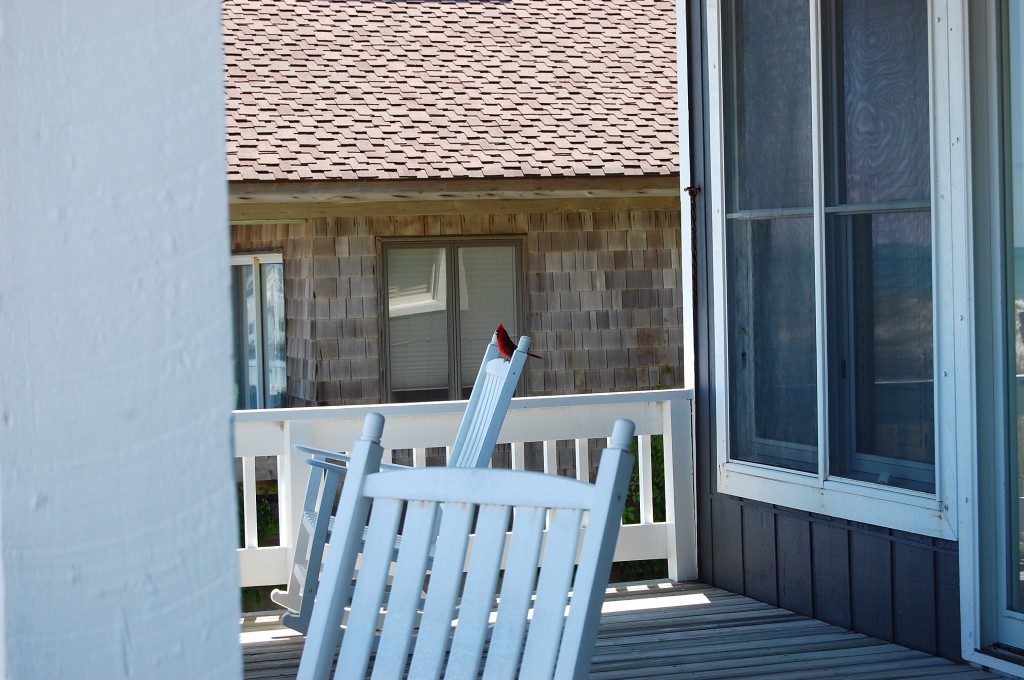


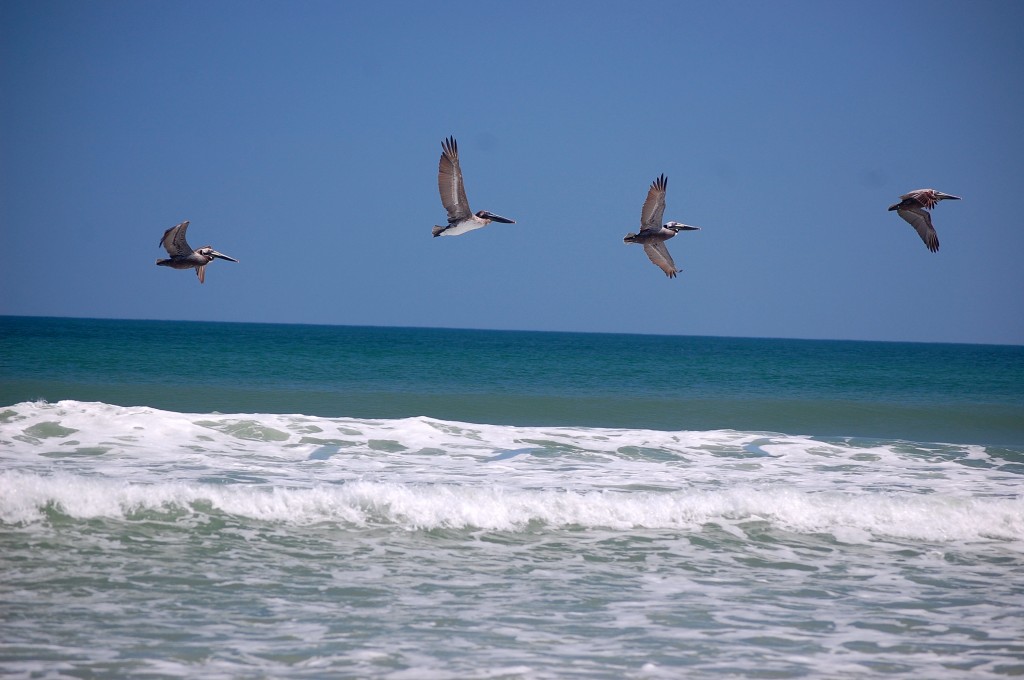
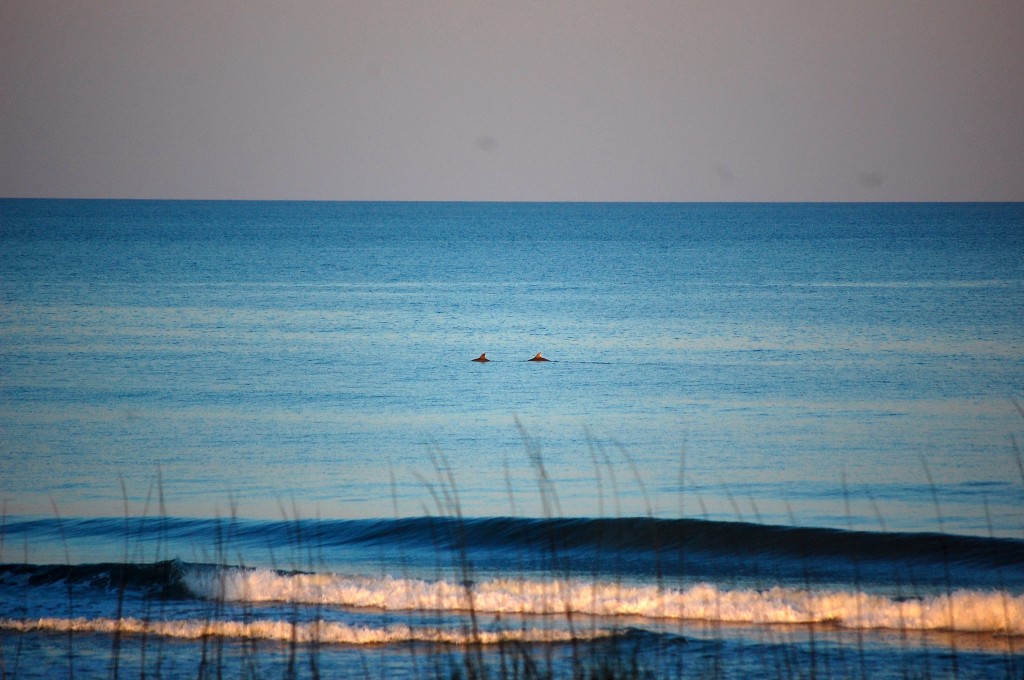
Those are porpoises. I take it as a good omen that our October retreats will be held at Porpoise Place.
Circadian Rhythms
We teach control of the light environment, so that there is bright natural light in the day and red-yellow light at night. Here for comparison are two science talks, one in the day, one at night. (The daytime talk has some blinds drawn to avoid glare on the TV screen.)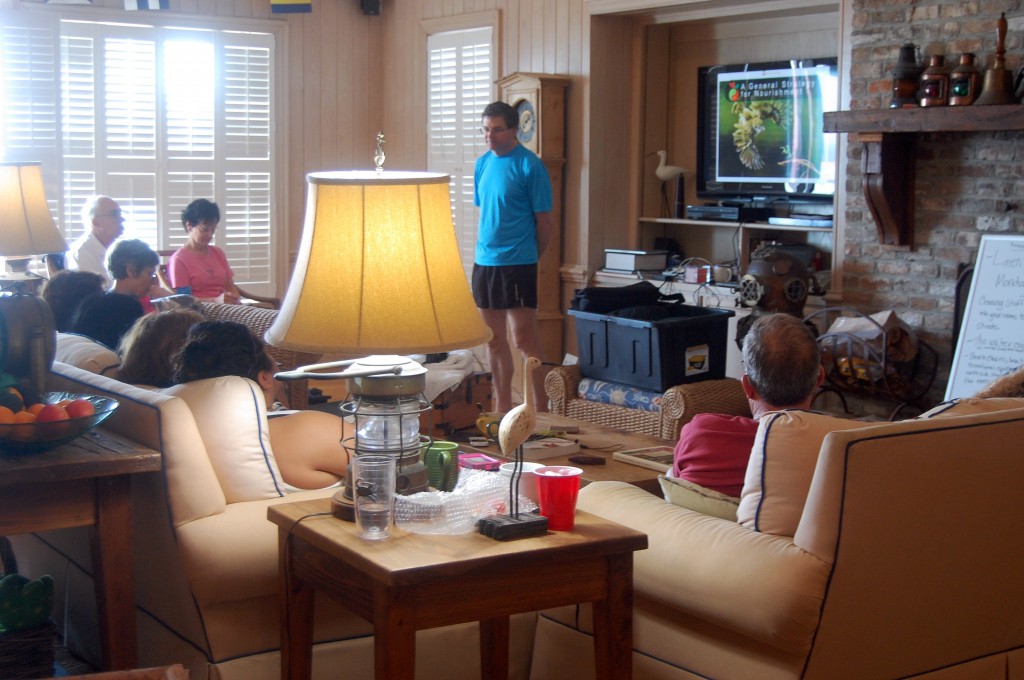
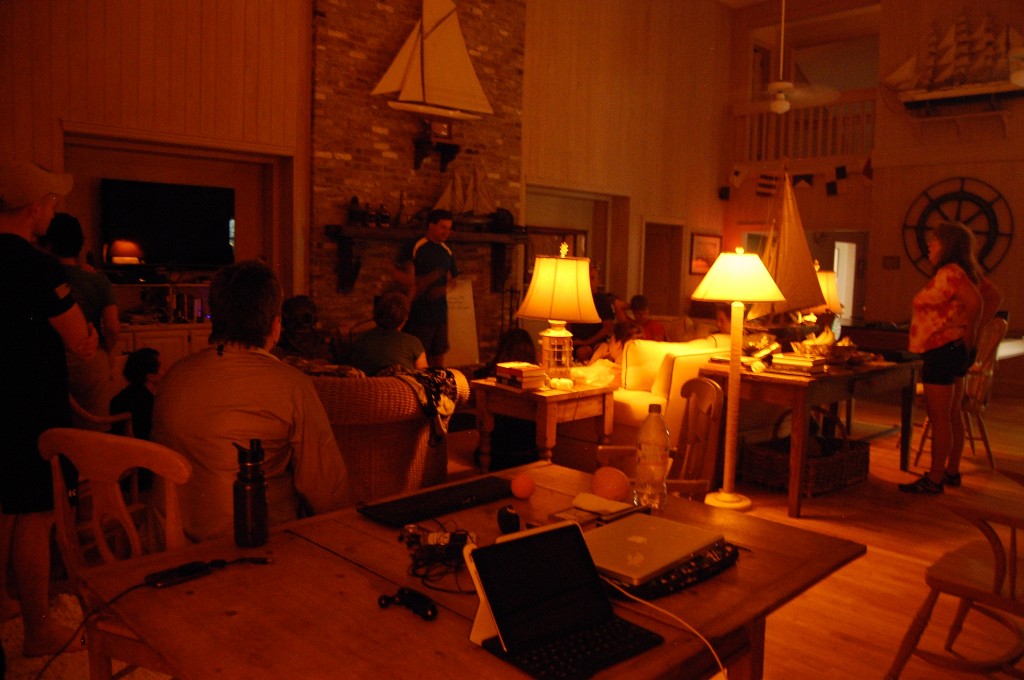
Here was the Retreat center, transitioned to night lighting: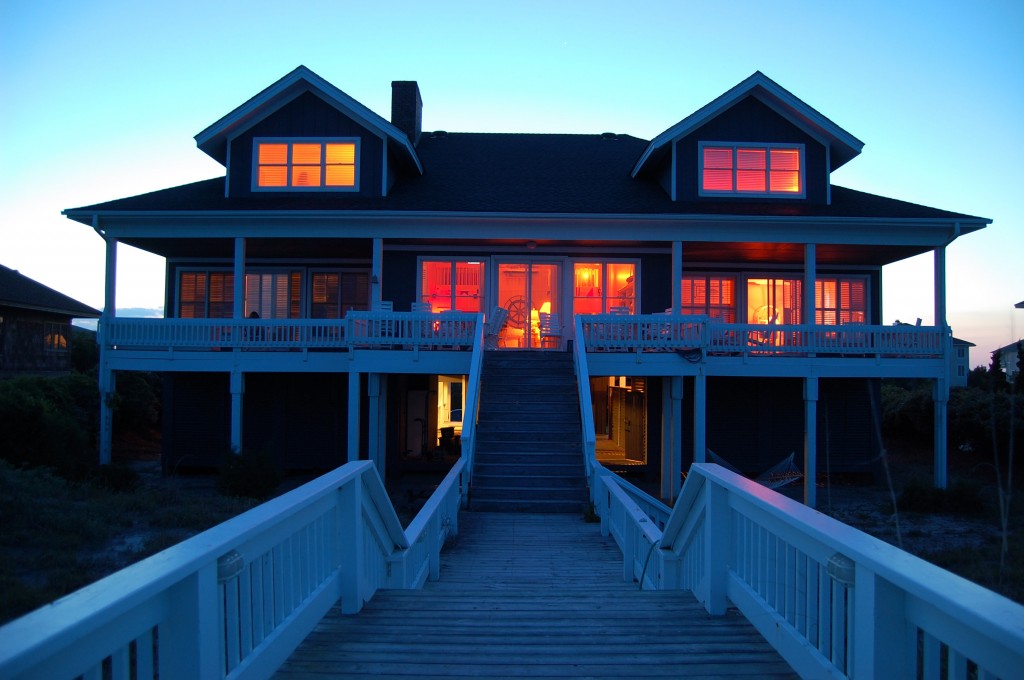
Circadian rhythm entrainment touches every aspect of life at the Retreats, including the types of activities we do at different times of day, when food is eaten, and details of the environment like lighting, sound, and temperature.
Exercise
We had two or three movement sessions per day, in morning, afternoon, and evening. (In October, we’ll have three every day.) “Movement” encompasses not just fitness-enhancing activities, but also mobility, healing massage and fascia release, relaxation, and meditation. The relaxing, meditative sessions were all in the evening, and prepare guests for sleep.
We used a variety of locations for vigorous activity: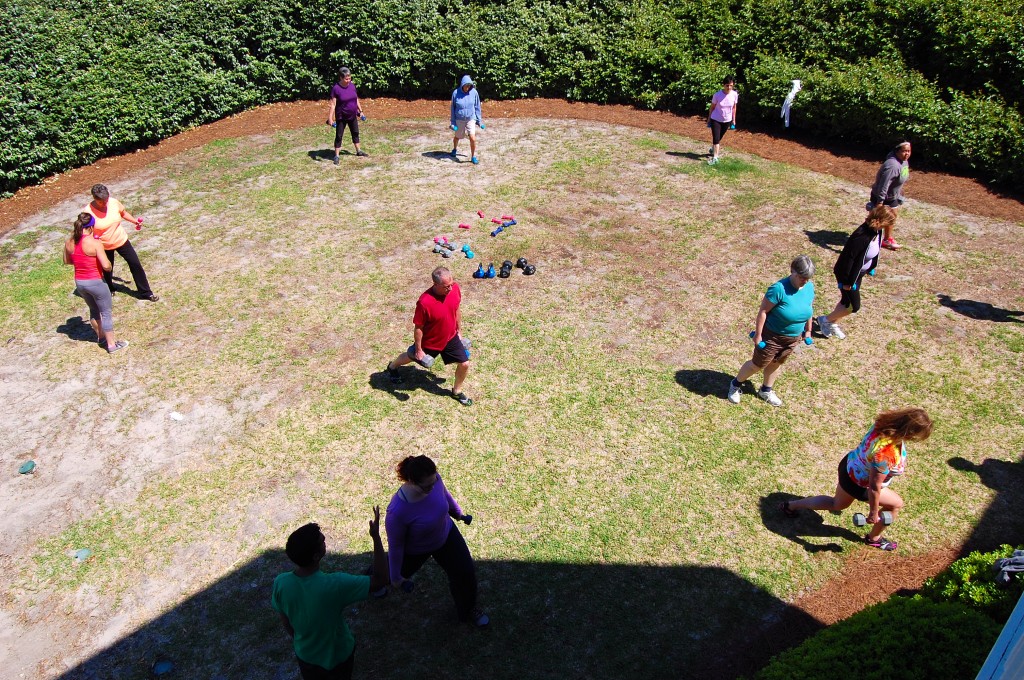
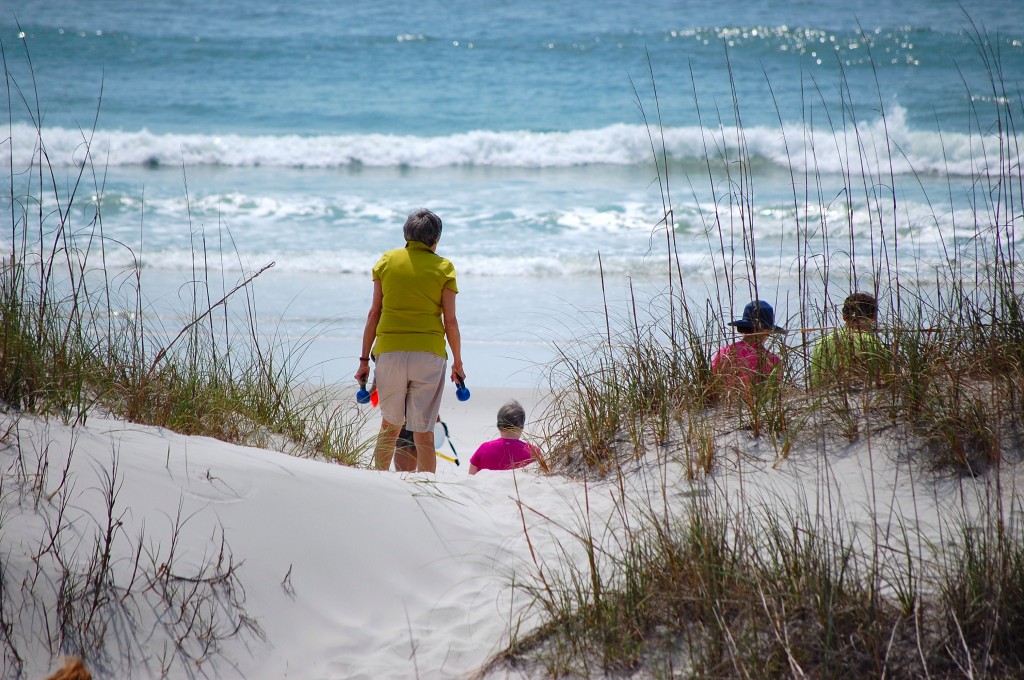
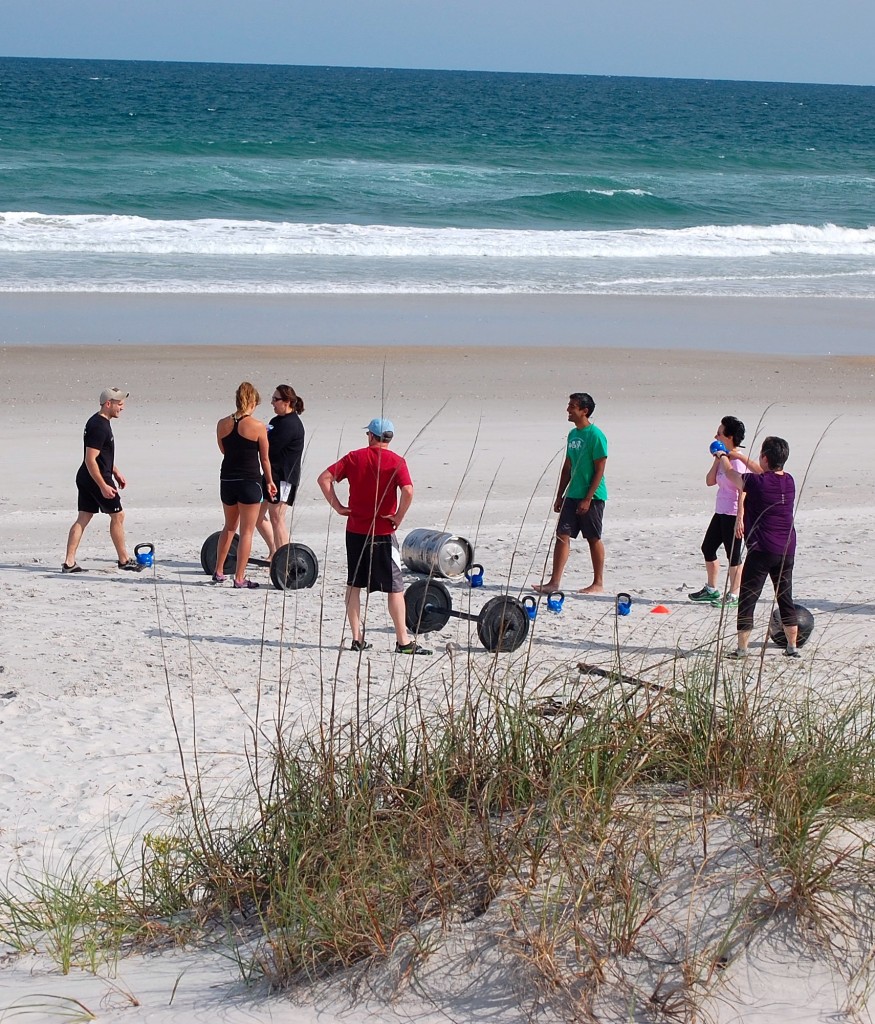
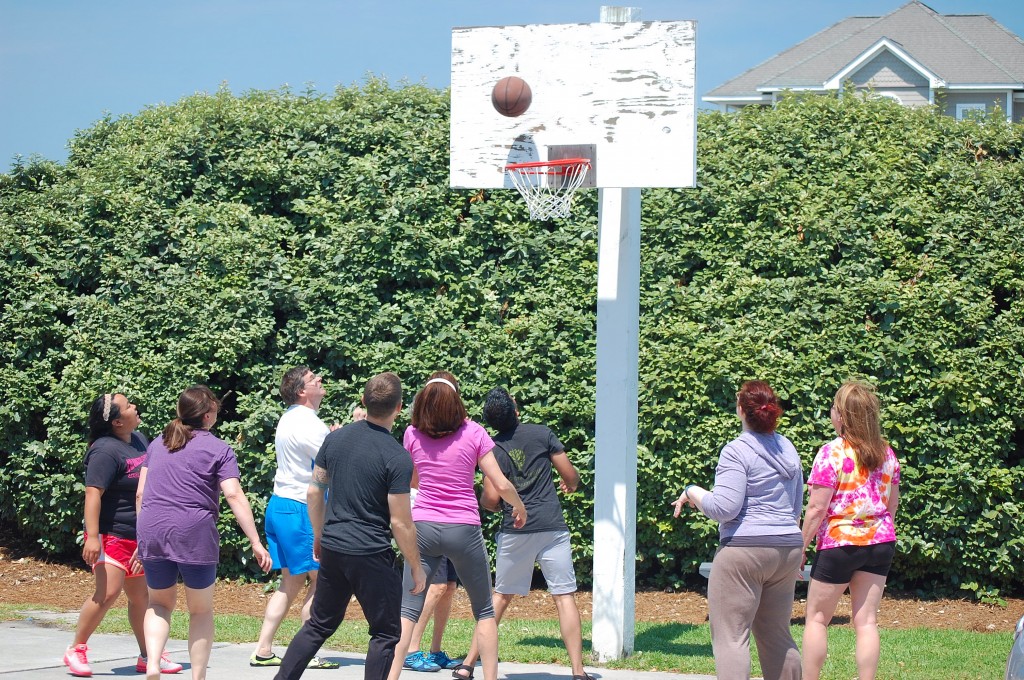
We had evening classes in “night movement” – relaxation, stress relief, meditation, and massage. Here I’m demonstrating a qi gong massage technique on trainer Danny Briggs:
Food and Cooking Classes
We have a paucity of food photos because our photographer, Shou-Ching, was also cooking class instructor and chef. We did manage to photograph our Chef de Cuisine, Chris Gates, in action: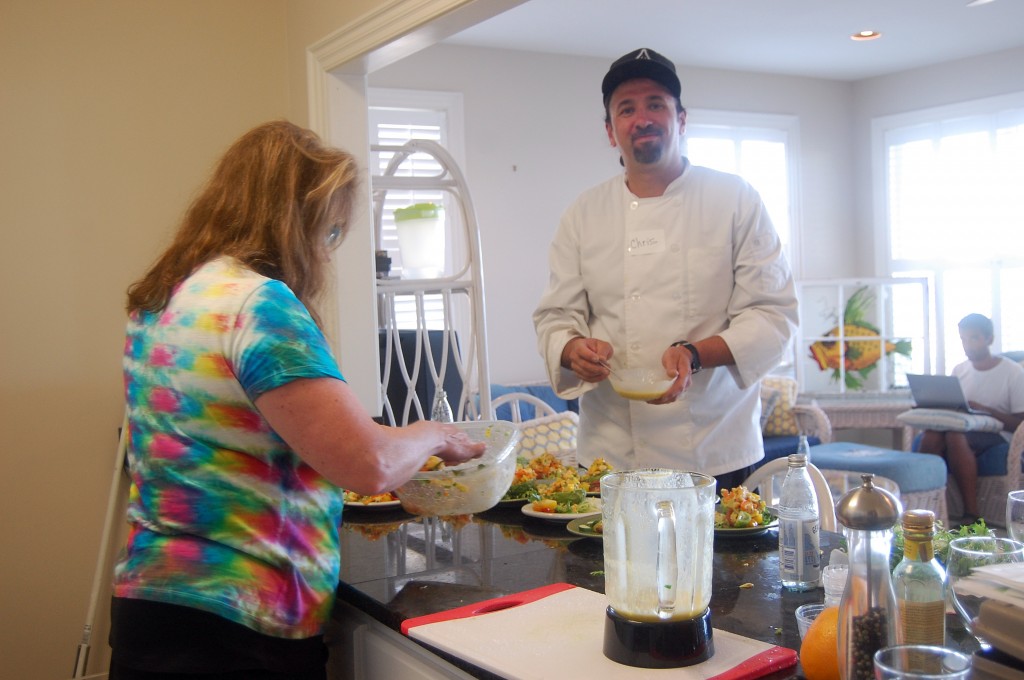
Here is Shou-Ching leading a cooking class: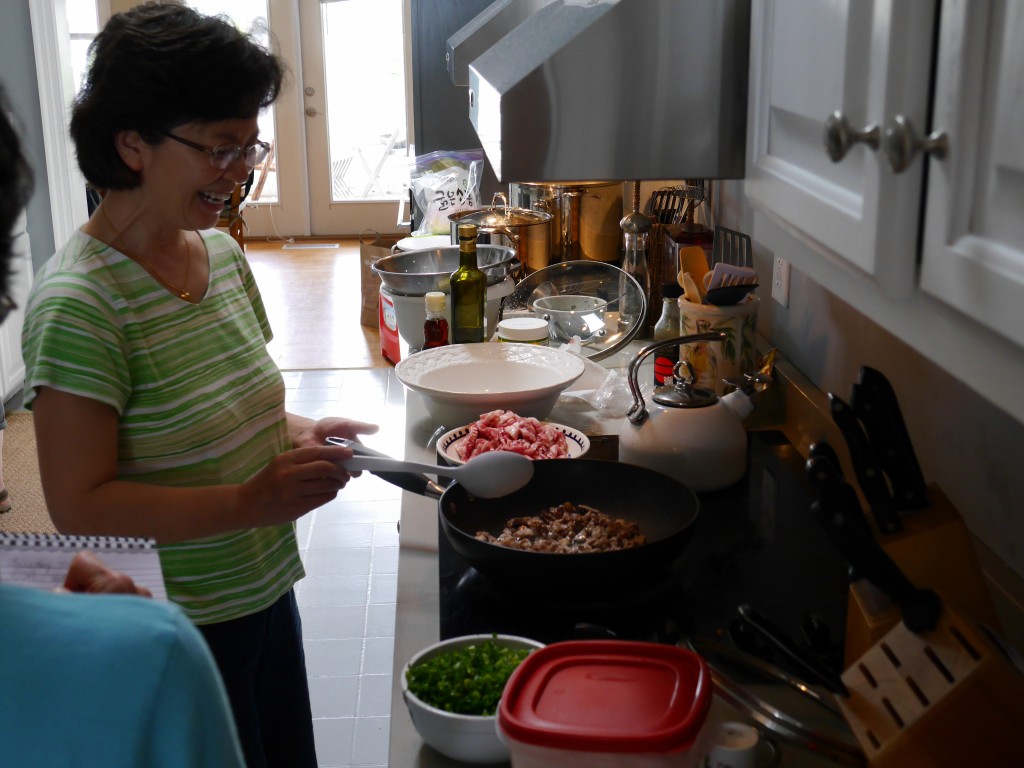
Chris Gates prepping beets and carrots: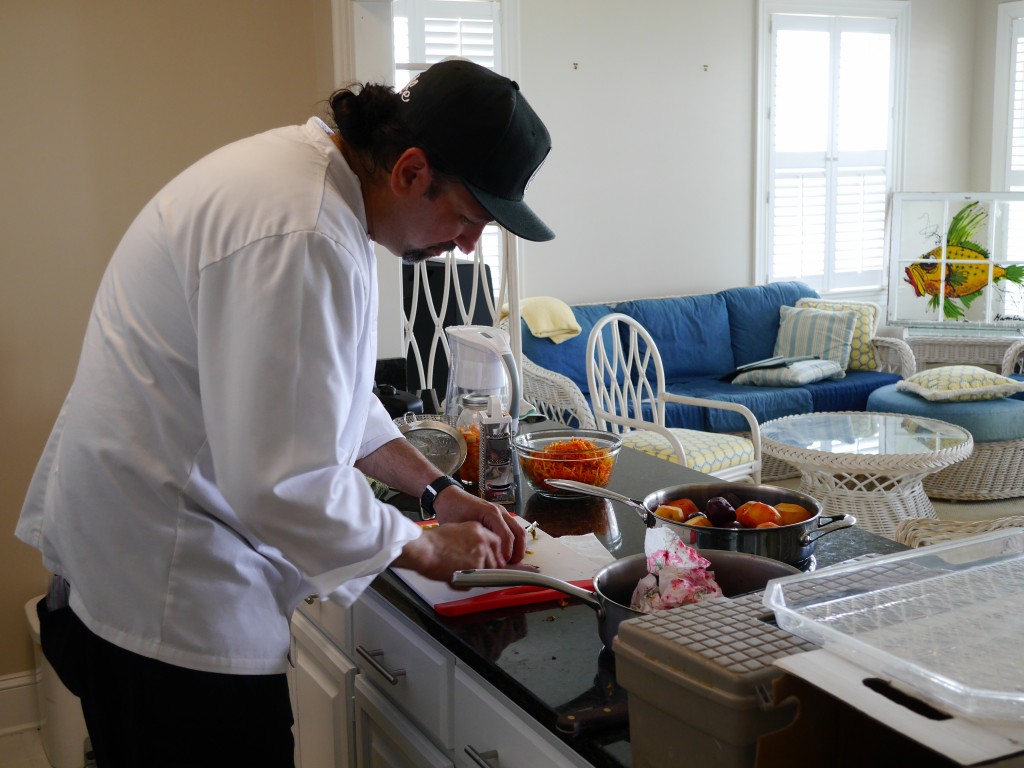
We served five courses every day, a salad and main course at lunch, and an appetizer, soup, and main course at dinner. Over two weeks, that adds up to 70 courses; enough for a fairly comprehensive survey of PHD cooking.
We found it worked best to plate the first courses (salads and appetizers), so that each guest got a similar amount, and then to serve the main course buffet style, so that each guest could choose the amount they wanted. Here is a seafood salad up close: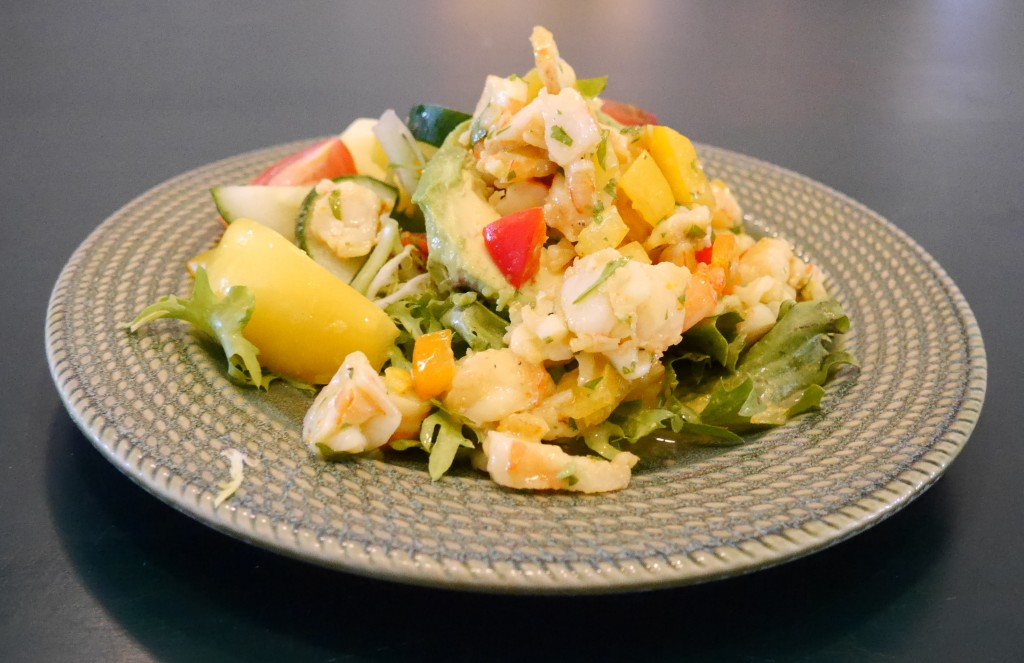
And plated: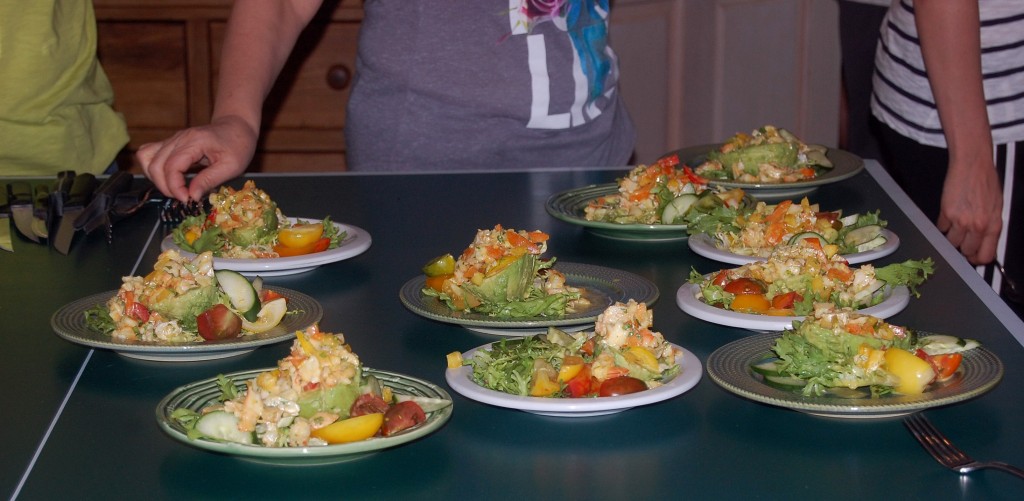
This appetizer, a fruit, cherry tomato, and mozzarella cheese salad, was so popular it was brought back as an “encore” appetizer: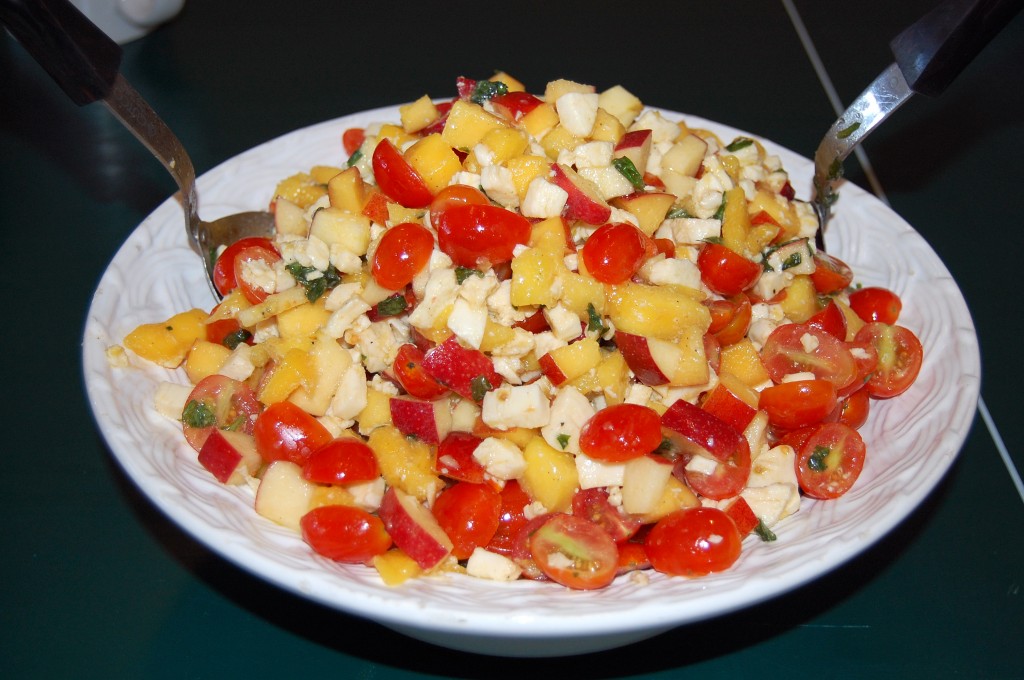
We advise getting three egg yolks per day, but they can be spread over many courses so they aren’t very noticeable. This was a Korean-Chinese style egg drop soup: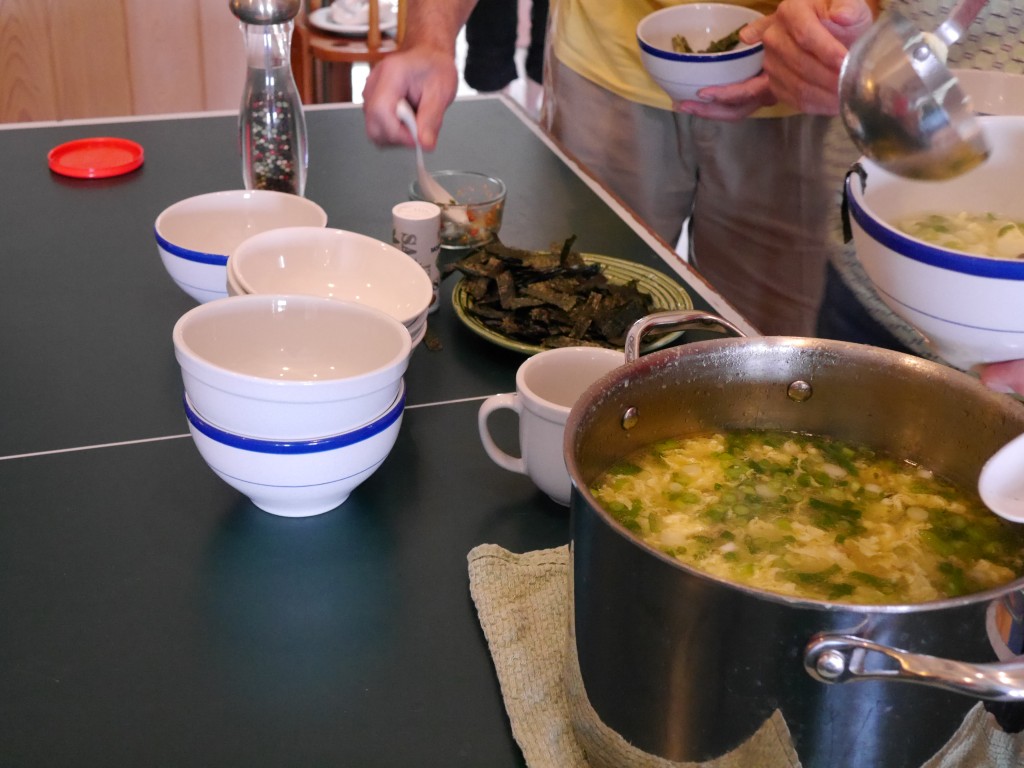
This is a main course of beef tenderloin (also known as filet mignon), potatoes, asparagus, soup, and kimchi: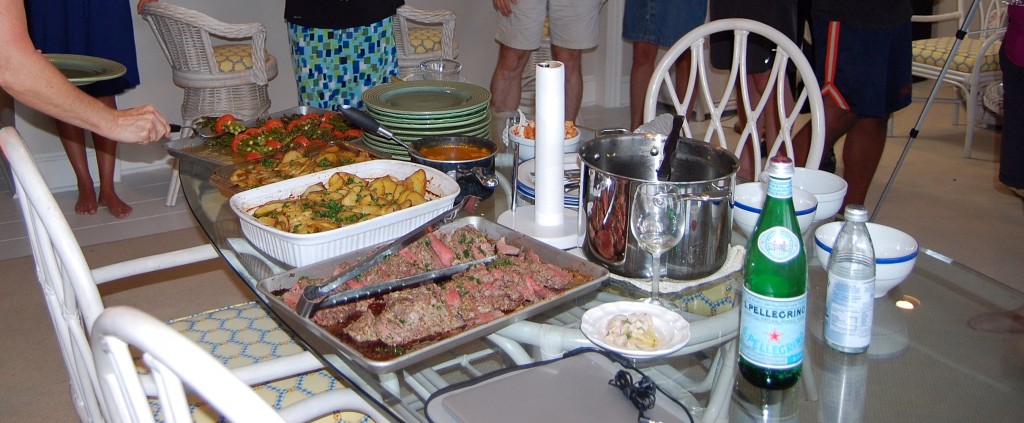
Lamb chops, spaghetti squash, potatoes, and onions: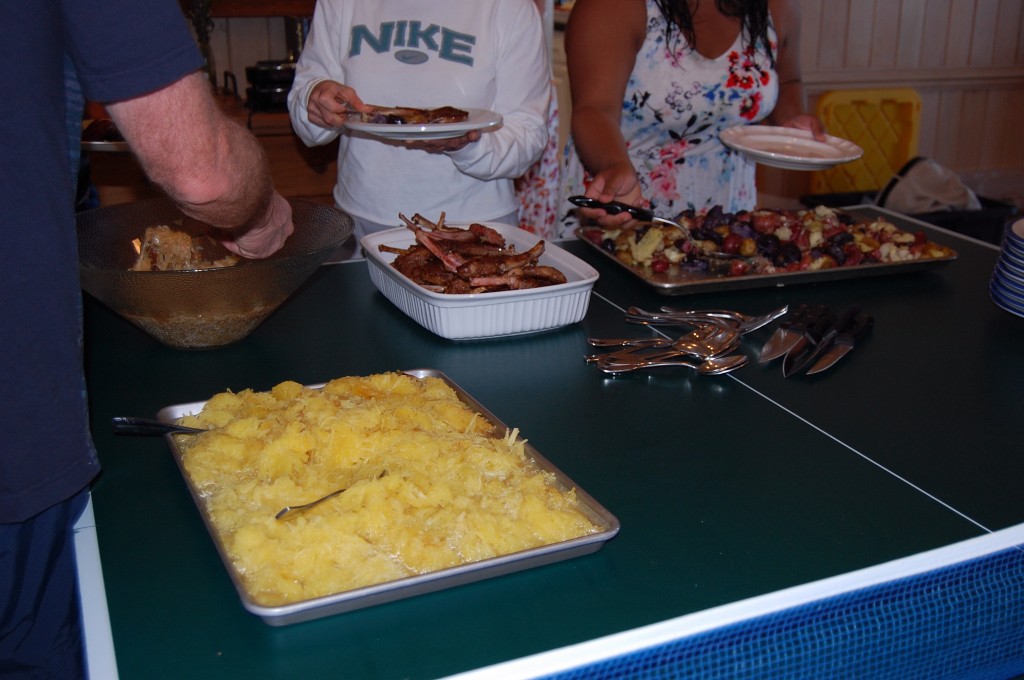
Duck breast and sweet potatoes in a raspberry sauce: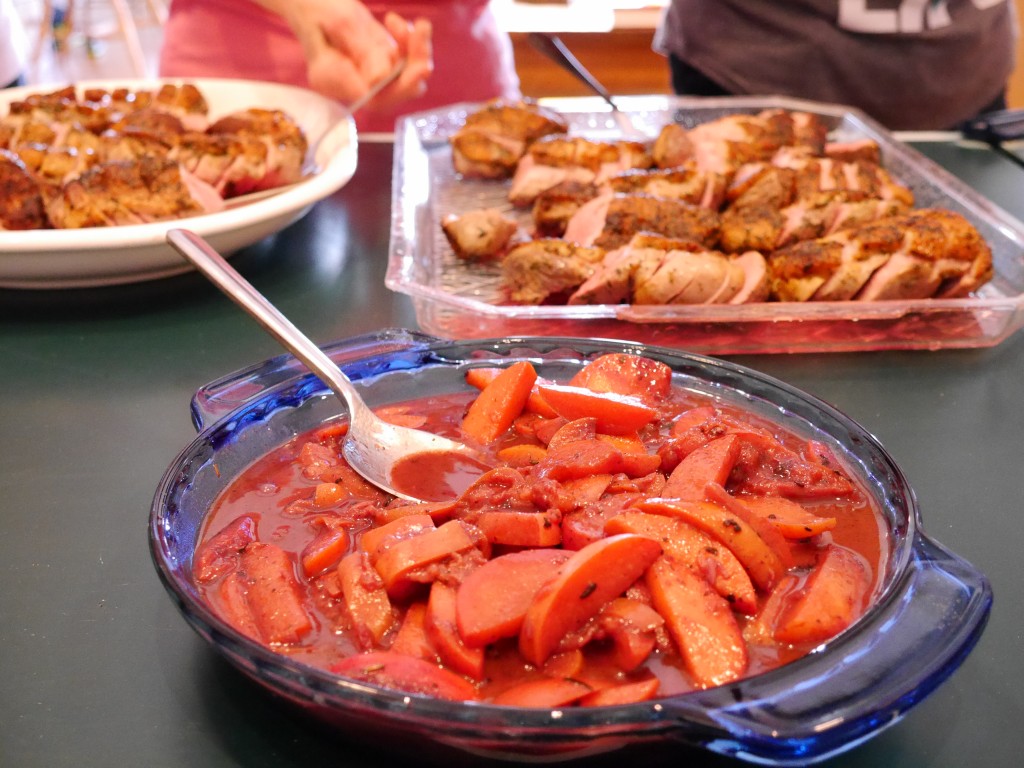
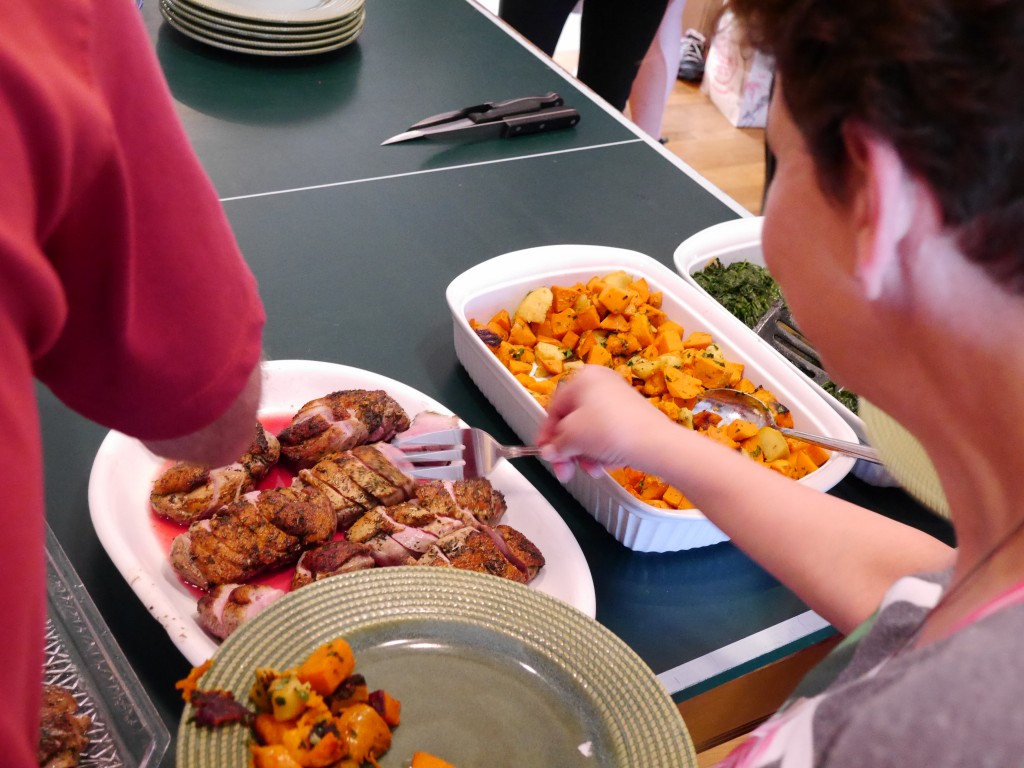
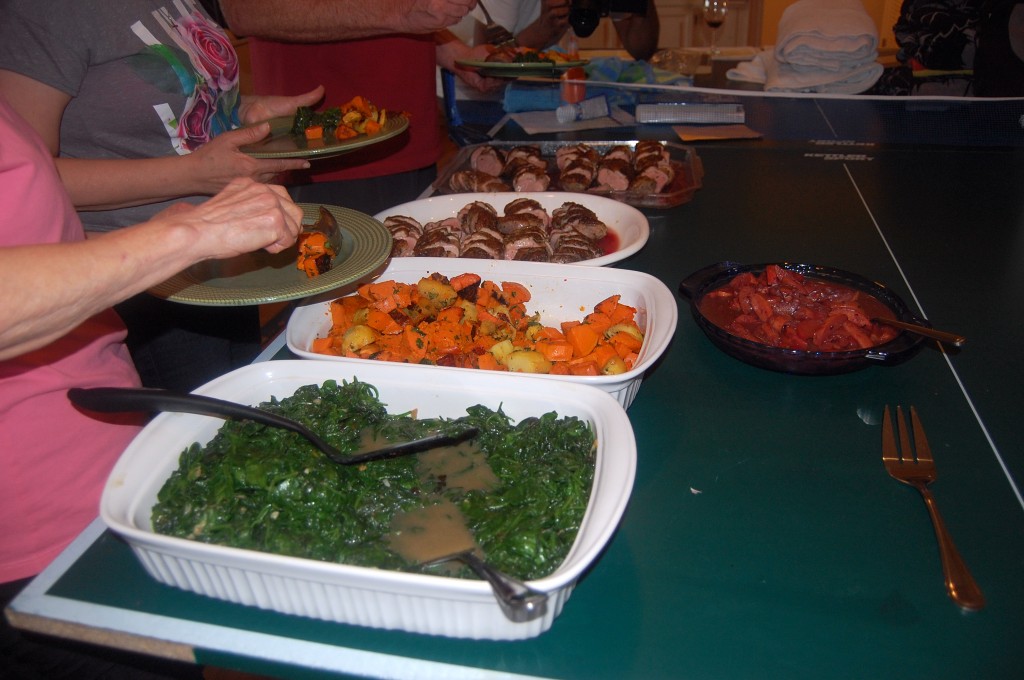
Note that we don’t deprive anyone of food, but the Retreats have proven to be excellent for weight loss among those who are overweight or obese (and for weight gain among those who are underweight). My Ancestral Health Symposium talk this year will be about why that is.
Free Time
The schedule set aside 3 hours each afternoon for free time, which could be used for personal health coaching. We did the health coaching on a private second floor deck: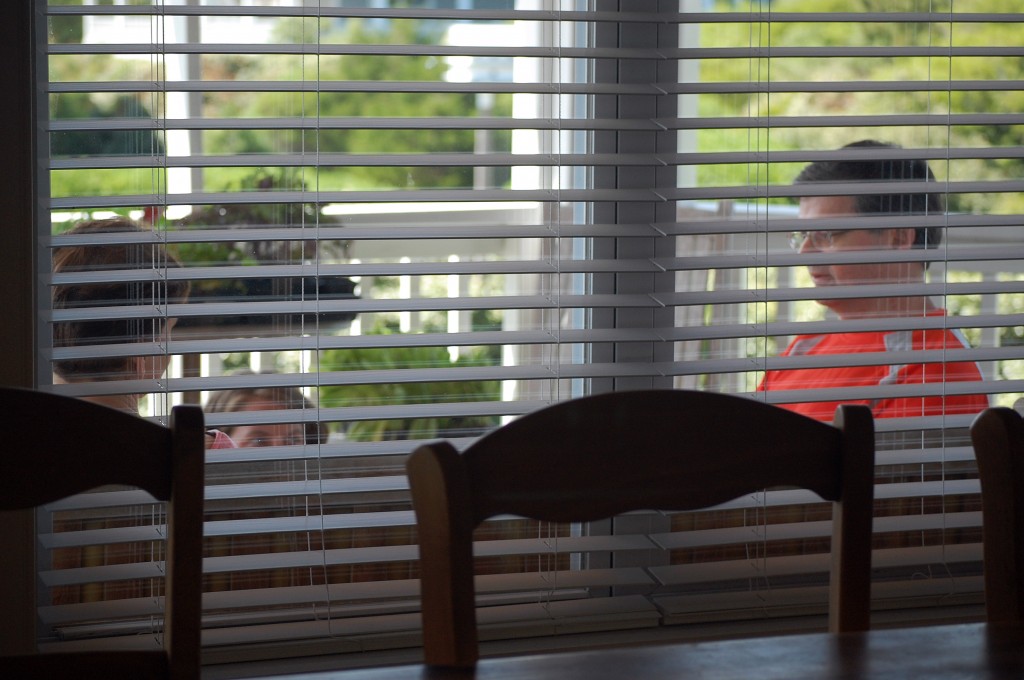
The staff managed to steal a little time for relaxation:
Most of the guests seemed to feel they were getting enough exercise in our activity sessions, and used the free time in restful ways: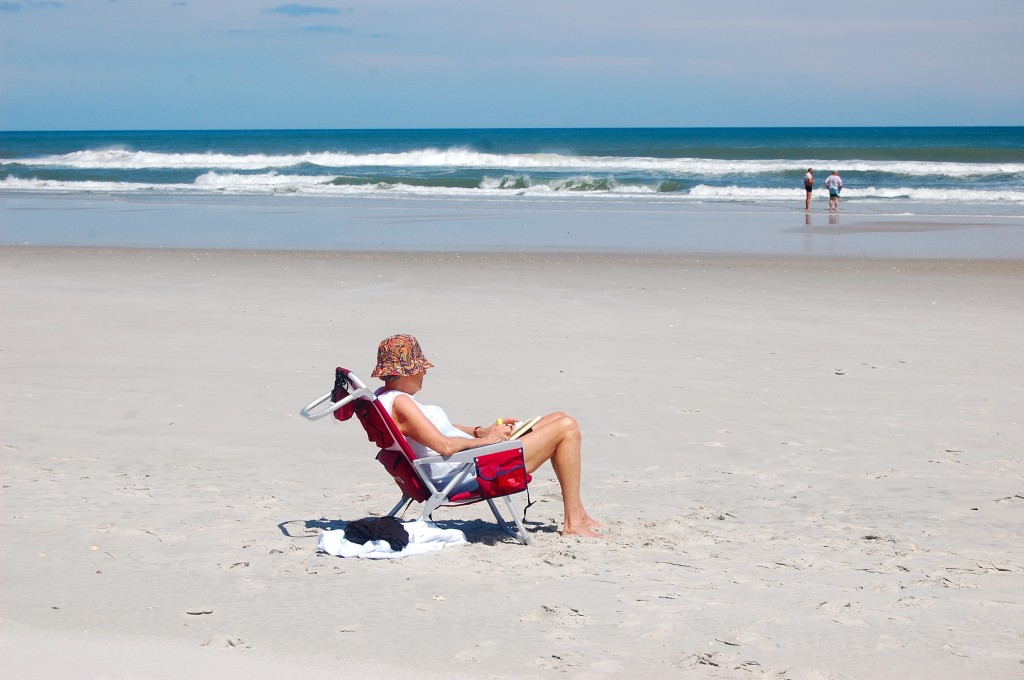
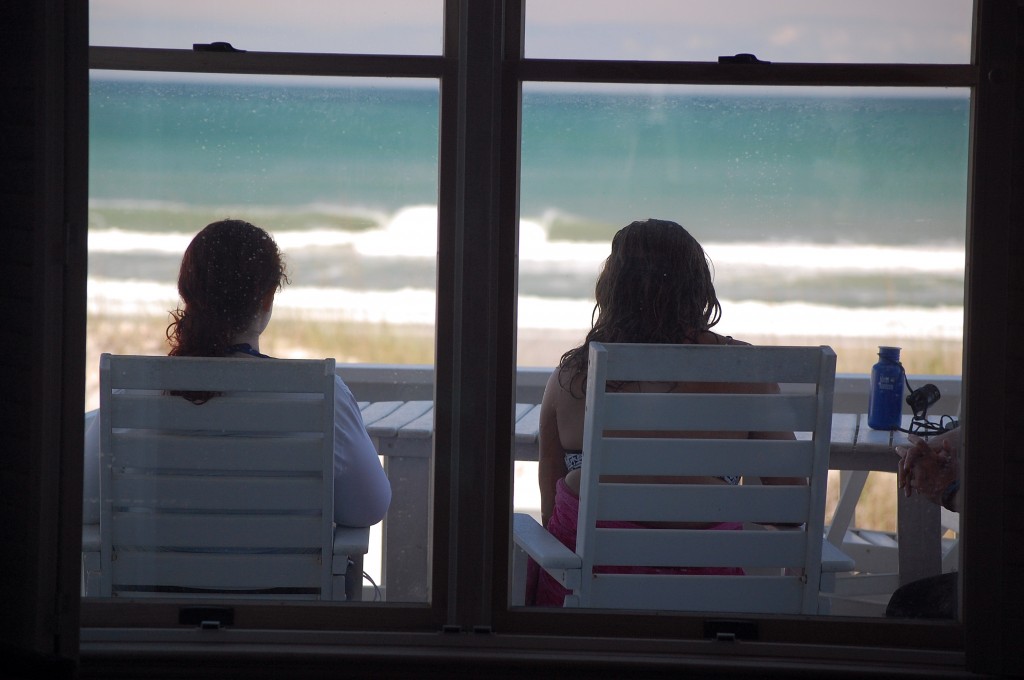
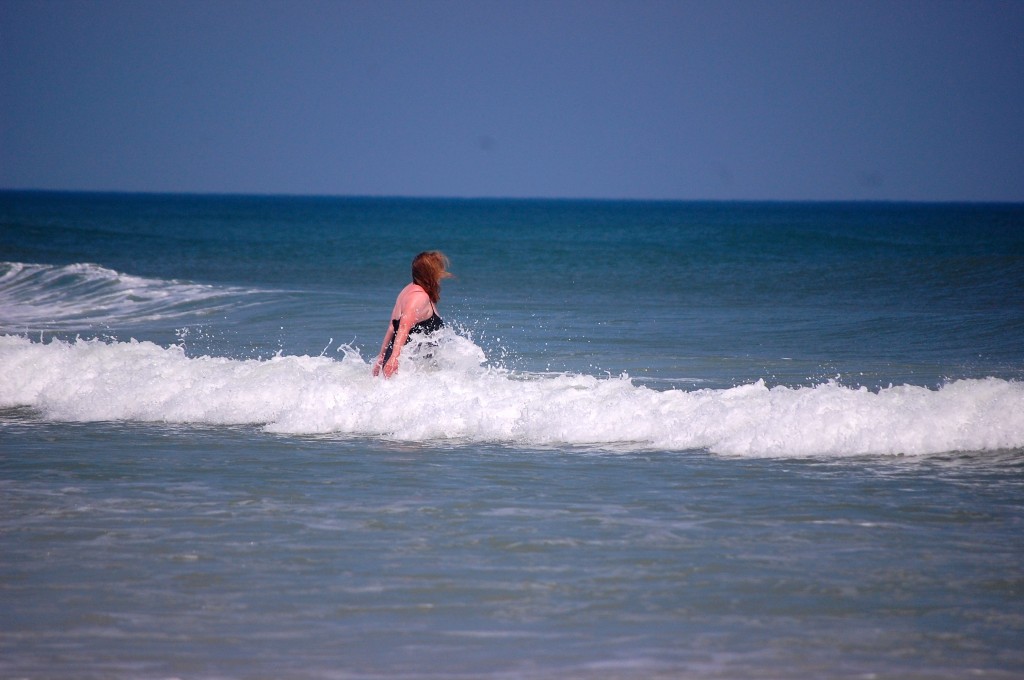

All Good Things Come to An End
At the Farewell Dinner, a gift for Shou-Ching: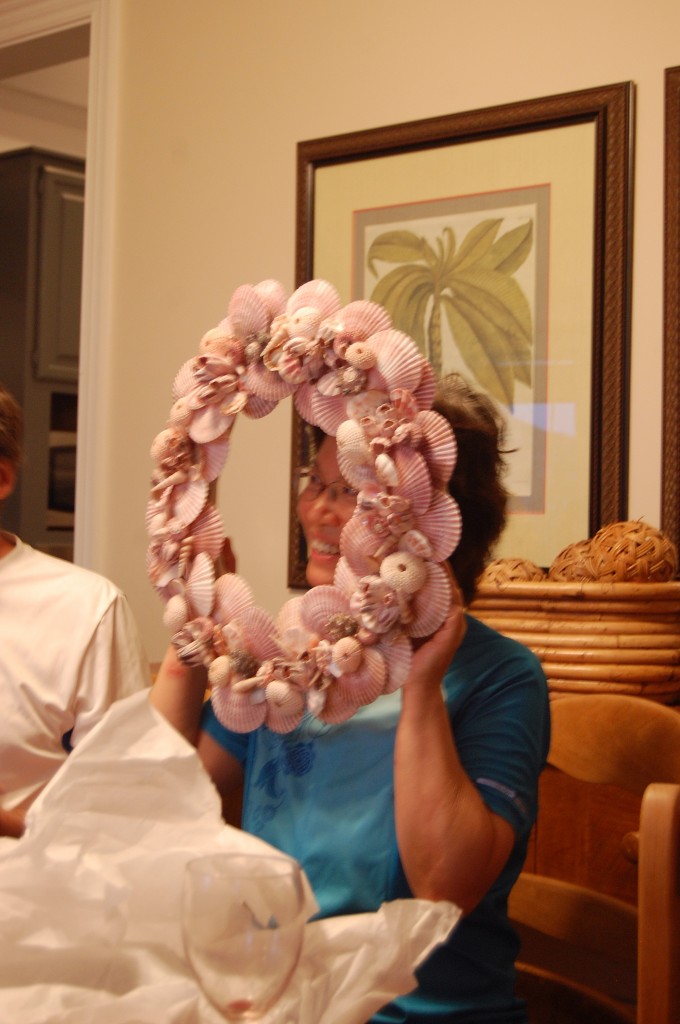
The best part of the Retreat was the friendships made. It was sad to have to say goodbye, but nearly everyone has kept in touch; and we have a Facebook group for alumni to help. Shou-Ching now has a small library of meal photos texted to her by retreat participants. This really touched her; after years of working in the competitive and busy environment of Harvard, it was special and rewarding for her to get to know the kind and lovely people who she has met through the blog and Retreat.
Join Us in October
We are accepting reservations for October, and invite you to join us. I’ll have more about our plans for October in my next post, but please feel free to peruse the Retreat web pages, and don’t hesitate to email me for info at paul@perfecthealthretreat.com or call me at 617-576-1753.

